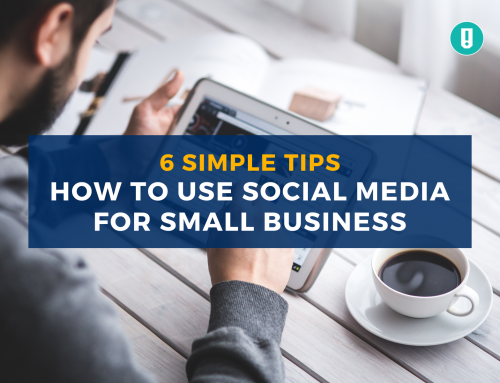Raise your hand if you would like 11% of your store’s sales to come from online purchases. I bet your hand is raised pretty high right now. Macy’s already falls into this category, with online purchases accounting for 11 percent of all sales or $3.1 billion per year. But e-commerce cannot stop at the online store, it needs to extend to the inbox.
Email marketing has one of the highest return on investments (ROI) of all the marketing channels. For every $1 spent on email marketing, the average return is $44.25. And with 91% of consumers checking their email once a day, it is a prime way to stay top of mind. With that type of power, selling products directly from email seems like a perfect way to help boost your online sales and drive more traffic to your store (both online and in person.)
Where should you start and how should you proceed? Below we have four tips to help you sell through email!
Keep It Simple. Keep It Short.
First, remember the main goal of the email: encouraging someone to buy. With that said, try to avoid including more than 3 products in the email. Your website and online store are your product catalog. You don’t need your email to do that too. If the email is written properly, it will either nudge a customer to make a purchase or direct them to your online site to browse and continue shopping.
Second, keep the copy short and concise. Product and promotional based emails do not require a lot of information, so long paragraphs are not needed. It is about the product and the conversion. How do you write the copy to be short, concise and still sales-focused? Follow these three steps:
- Make the deal and product front and center
- Give an expiration date (don’t forget that urgency!)
- Decrease friction by making the product easy to buy
Create a Sense of Urgency.
While shopping for leisure is fun, your goal as a business is to convert those emails opens into sales. By creating a sense of urgency, customers now have a reason to convert. Without that, your email has a greater chance of sitting in the inbox and that means lost sales. Language is the main way to create urgency. For example, “Shop Now” or “This Weekend Only!”
Segment Your Selling Through Email.
Selling to the masses is a wonderful thing – until it comes to email. As customers, we all want to feel special. Receiving an email featuring a pair of jeans after I’ve purchased a shirt (from the similar style) tells me you took the time to reach out and provide further value. The facts support this theory, with segmented and targeted emails generating 58% of all (email) revenue according to DMA.
When looking to segment an email list, try to first focus on one main factor and work up from there. For example, look into segmenting by previous purchase history. According to Certona, Only 39% of online retailers send personalized product recommendations via email. That means the chance to stand out in this market is major. An e-commerce provider, such as Shopify, let’s you easily create lists by specific products which can then be synced to your SnapRetail account for sending.
Segmenting your email lists does take time (trust us, we know), but it is time well spent that surely will pay off in the long run with increased engagement and decreased unsubscribe rates.
Offer a Promotion.
People love to buy, but they also love to have a reason to buy. Promotions are that reason. If the goal of the email is to encourage someone to buy a single product, offer a discount that is front and center to help close the deal. Better yet, make that discount include both the product in the email and other products within your store (online or in person.) If a customer happens to dislike the product in the email, say a specific bag, she can simply click to redeem the coupon on all other accessories. In this way, you are doubling your chance for conversion.
The goal of the email is to encourage buying, so if that happens within the email, online, or in your store that’s a conversion that any small business is willing to take!





Leave A Comment